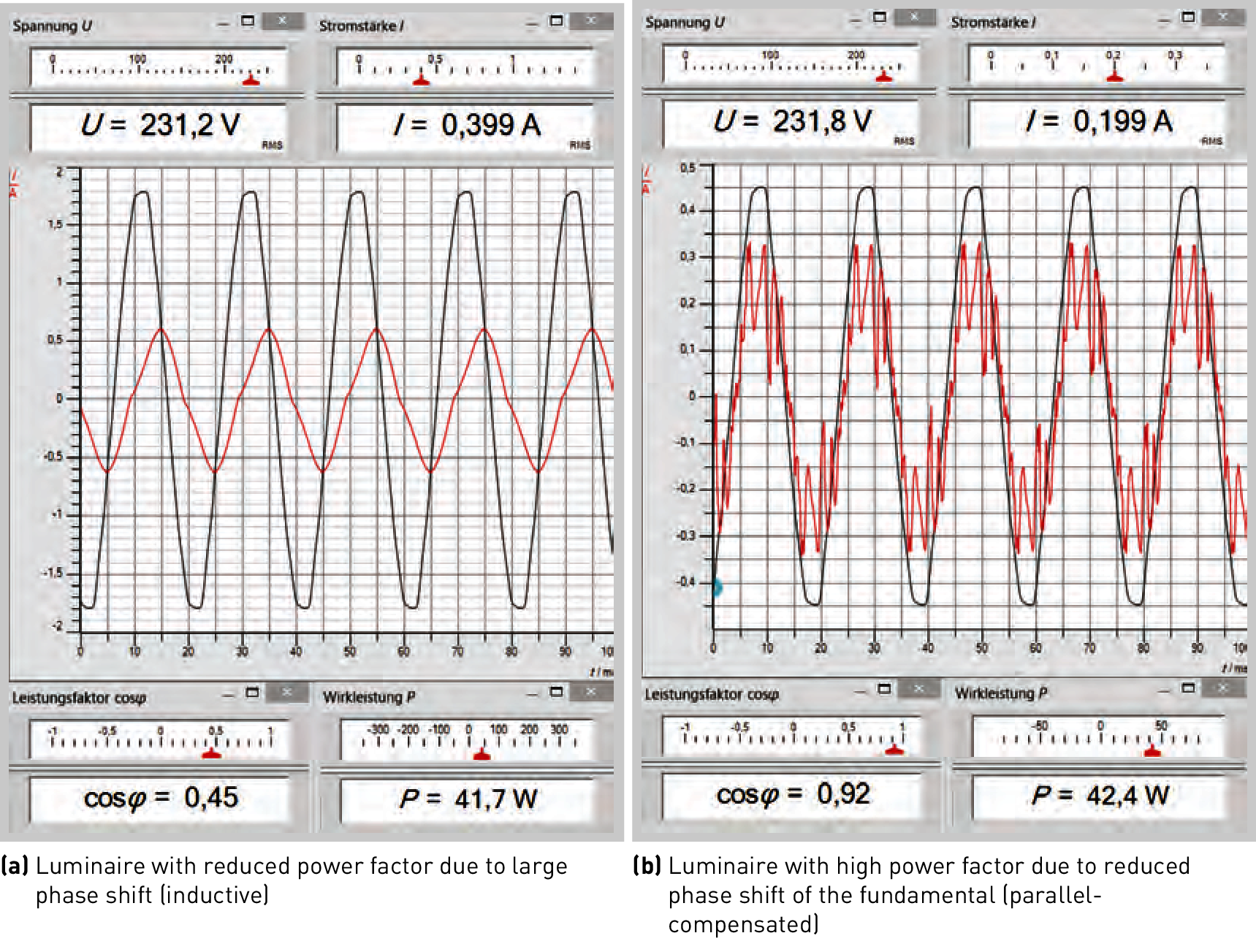Inductors (electromagnetic coils) and capacitances (condensers) in electronic circuits impact the temporal profile of the electrical charge transfer – the current I – in the circuit when electrical voltage U is applied. Condensers are energy storage devices and feature a charge rate which ceases under constantly applied voltage once the condenser is fully charged. Inductors delay the charge transfer. When AC voltage is applied, both leads to an alternate, temporal shift in current flow size I(t) compared to the applied voltage level U(t) – a phase shift φ.
The phase shift φ can be negative or positive







